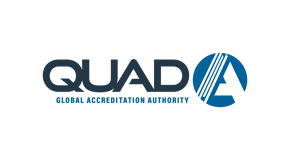Completing a Plan of Correction (PoC) is a critical process that follows the identification of deficiencies or non-compliance issues during a QUAD A on-site survey or a facility self-survey. A well-executed PoC not only addresses the immediate concerns but also lays the groundwork for continuous improvement. This article will explore the steps involved in crafting and executing an effective PoC, the importance of stakeholder engagement, and the long-term benefits of a successfully implemented PoC.
When a facility receives a report detailing deficiencies, the initial reaction might be defensiveness or discouragement. However, this moment presents a valuable opportunity for growth and improvement. Remember, the ultimate goal is patient safety! The first step in completing a PoC is to approach the findings with a positive, proactive attitude. Viewing the correction process as a chance to enhance processes, compliance, and to improve patient outcomes can transform the task from a punitive chore into a constructive project.
The foundation of a successful PoC is a thorough understanding of each identified deficiency. This means going beyond the surface to analyze the root causes.
- Why did the deficiency occur?
- What processes, systems, or behaviors contributed to the issue?
Root cause analysis can involve team interviews, process reviews, and data analysis. Understanding the root causes enables the facility to address the specific deficiency, reduce risk, and strengthen the system against future issues.
Once the root causes are understood, the next step is to develop corrective actions (what steps need to be taken to correct the issue). These actions should be specific, measurable, achievable, relevant, and time-bound (SMART). For each deficiency, the PoC must outline:
- What will be done to correct the issue?
- Who is responsible for implementing the corrective action (by title, not name)?
- When will the action be completed?
- How will the effectiveness of the action be evaluated?
It's crucial to involve stakeholders from the affected areas in this process. Their insight and engagement can enhance the quality of the corrective actions and facilitate smoother implementation.
Implementing the corrective actions is where the plan moves from paper to practice (how you will implement the actions, who will be involved). This phase involves allocating specific resources, executing the corrective measures, and monitoring progress. For example, it is not acceptable for the PoC to say, “Staff will follow established policy” because it is not specific. What is acceptable is more specific details, such as, “The Director of Nursing will train nursing staff in the appropriate handling of biological waste. The Director of Nursing will document the participation of trainees in the personnel file, along with the date of the training Nursing staff will follow accepted practices and training relating to biological waste consistent with the established policy.” Communication is key during implementation. Each PoC must contain a completion date for each deficiency, this is the date that correction was or will be completed. For example, the date of policy approval, date of staff training, date a new process was implemented, etc.
Communication is key during the PoC process. Regular updates can inform all stakeholders of progress, celebrate interim achievements, and maintain momentum. It's also vital to remain flexible during this phase; if an action is not yielding the expected results, be prepared to study and adjust the plan.
Monitoring, tracking, and evaluation are continuous processes that extend beyond the official completion and acceptance of the PoC (once the correction is made, who will track this to monitor the facility’s compliance in the future and to determine if the corrective actions were implemented in the appropriate timeframe? How often and for how long will this be monitored? How will the facility document ongoing monitoring?). Establishing metrics for success and mechanisms for regular monitoring can help the facility determine whether the corrective actions have the desired effect and that improvements are sustained over time. This might include periodic audits, performance indicators, or feedback mechanisms using tools to track compliance, such as score sheets, review forms, and dashboards. Learning from the implementation of the PoC can also inform future processes, contributing to a culture of continuous improvement.
Engaging stakeholders throughout the PoC process cannot be overstated. From frontline employees to senior management, everyone's involvement is crucial for a successful correction plan. Stakeholders can provide valuable insights into the practicalities of implementing changes, contribute to a more accurate understanding of root causes, and serve as champions for the process, encouraging their peers to adopt the necessary adjustments. By involving stakeholders early and often, a facility can foster a sense of ownership and accountability, enhancing the chances of successful implementation.
The long-term benefits of a well-executed PoC extend far beyond facility accreditation readiness and compliance. They include improved operational efficiency, better employee morale, and an enhanced facility reputation. Perhaps most importantly, a successful PoC demonstrates a facility's commitment to quality, safety, and continuous improvement. It shows that the facility is not only willing to correct deficiencies but is also proactive in preventing future issues.
In conclusion, completing a PoC is a complex but ultimately rewarding process. By approaching deficiencies as opportunities for improvement, thoroughly analyzing root causes, developing and implementing smart corrective actions, and engaging stakeholders throughout the process, facilities can turn a moment of criticism into a powerful driver for positive change. The journey towards compliance and excellence is ongoing, and a well-executed PoC is a significant milestone along the way.
Since 1980, QUAD A (a non-profit, physician-founded and led global accreditation organization) has worked with thousands of healthcare facilities to standardize and improve the quality of healthcare they provide – believing that patient safety should always come first.


